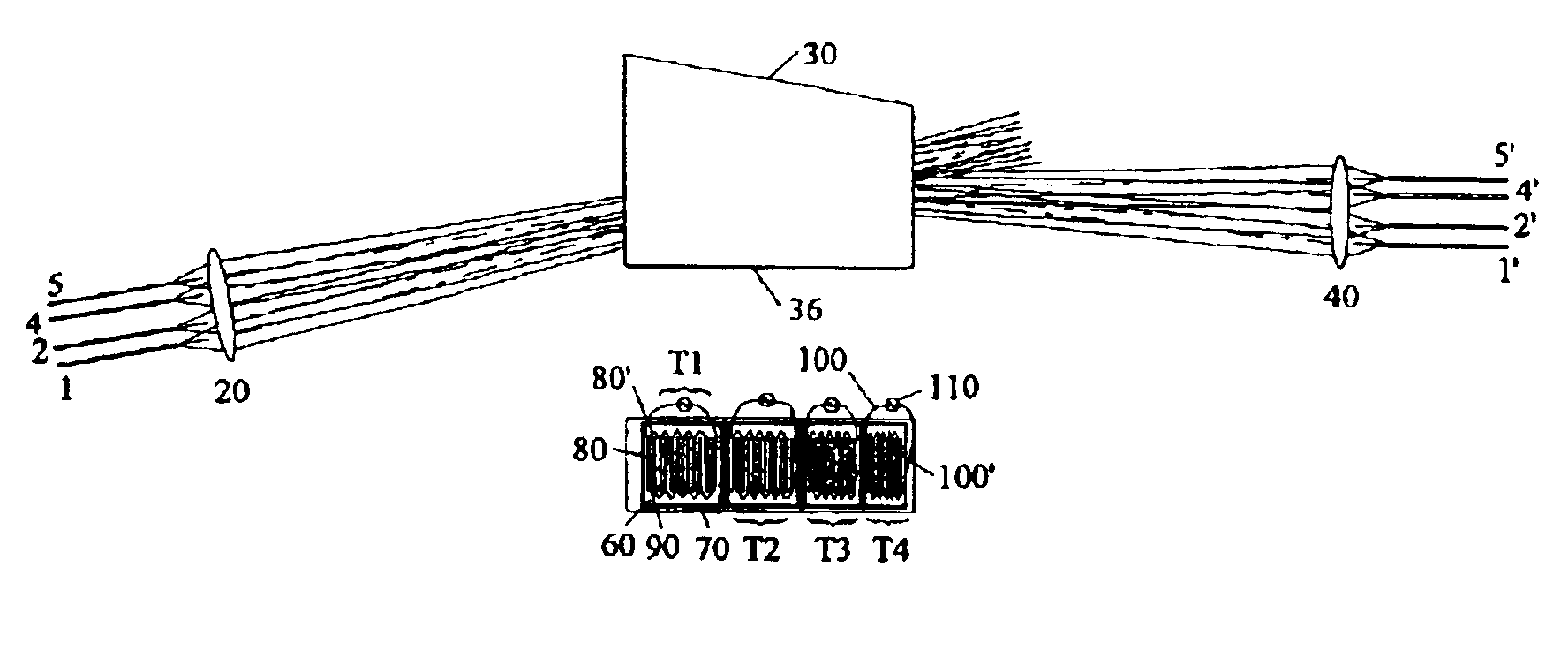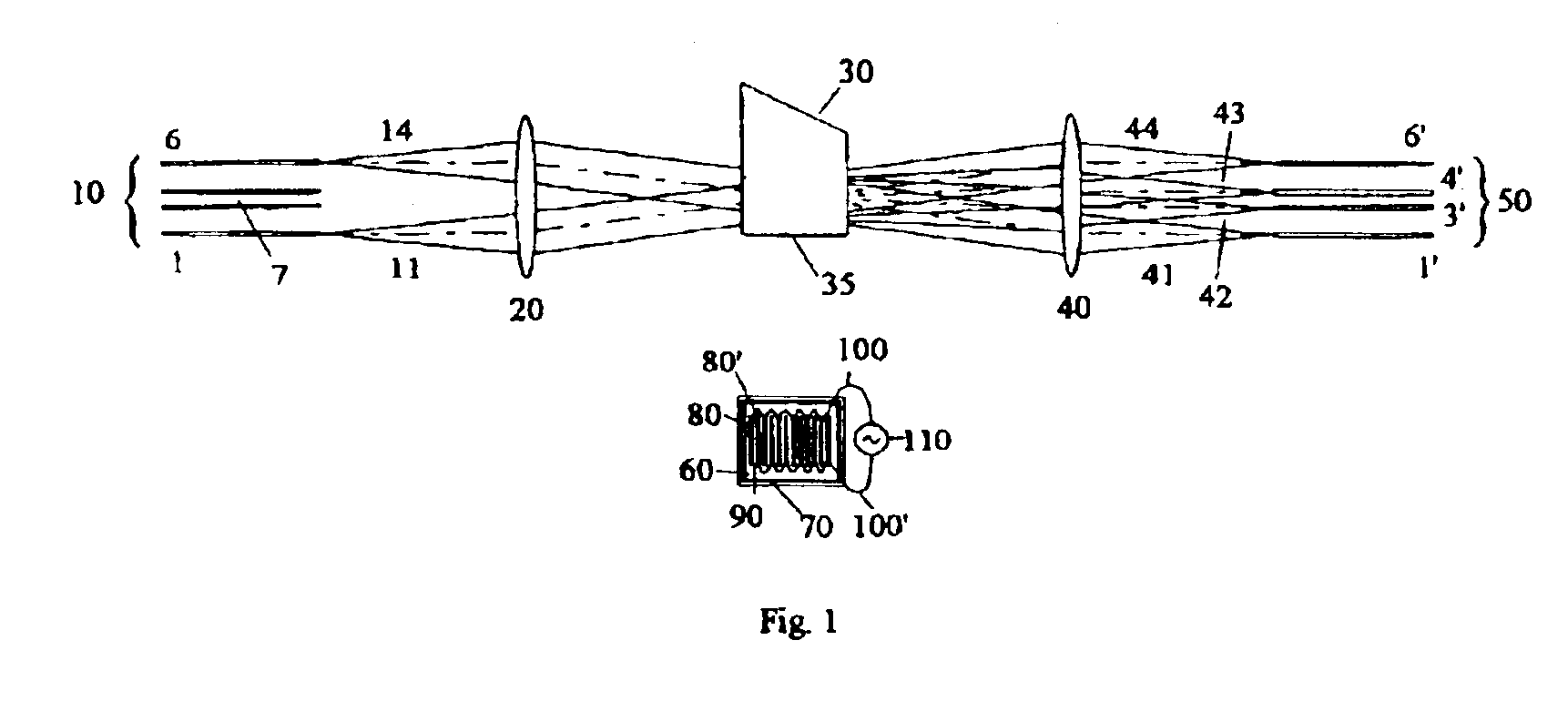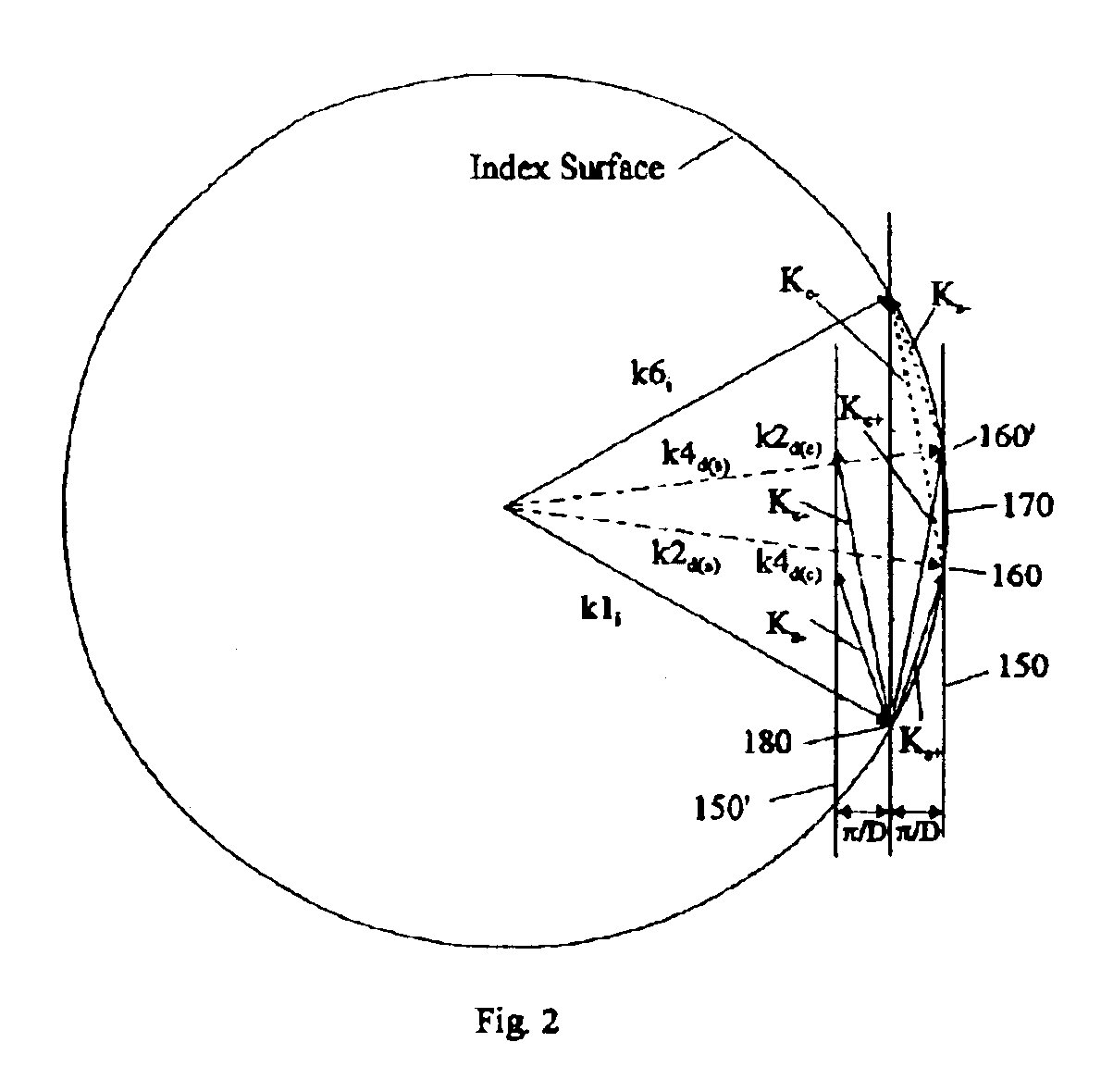Fiber-optic matrix switch using phased array acousto-optic device
a phased array acousto-optic device and fiber-optic matrix technology, applied in the direction of optics, optical light guides, instruments, etc., can solve the problems of low reliability, slow response time of electro-mechanical fo switches, and inability to operate in the microsecond range, even with mems technology, to achieve the effect of controlling the strength of coupling
- Summary
- Abstract
- Description
- Claims
- Application Information
AI Technical Summary
Benefits of technology
Problems solved by technology
Method used
Image
Examples
Embodiment Construction
[0019]FIG. 1 shows one of the preferred embodiments of the current invention. The transducer 35 is fabricated with piezoelectric plate 60 bonded to an AO device material body 30 with bonding agent 70 consisting of several thin metallic layers deposited by vacuum or plating process. The bonding layer in the phased array transducer is usually floated, meaning the electrode is not connected at any place. The transducer's active area is defined by the top electrode pattern. In the preferred embodiment the phased array pattern is selected for the top electrode. The phased array pattern consists of periodic metallic film stripes 80 and 80″ with gaps 90. The pattern is chosen to have a fill factor in the range of 0.1 to 0.9 to optimize the coupling between the RF and acoustic field. This pattern is known as “inter-digital pattern.” The alternate electrodes are connected by thin wires 100 and 100″ forming two groups and are excited with RF drive signal 110 while the bottom metallic layer of...
PUM
 Login to View More
Login to View More Abstract
Description
Claims
Application Information
 Login to View More
Login to View More - R&D
- Intellectual Property
- Life Sciences
- Materials
- Tech Scout
- Unparalleled Data Quality
- Higher Quality Content
- 60% Fewer Hallucinations
Browse by: Latest US Patents, China's latest patents, Technical Efficacy Thesaurus, Application Domain, Technology Topic, Popular Technical Reports.
© 2025 PatSnap. All rights reserved.Legal|Privacy policy|Modern Slavery Act Transparency Statement|Sitemap|About US| Contact US: help@patsnap.com



